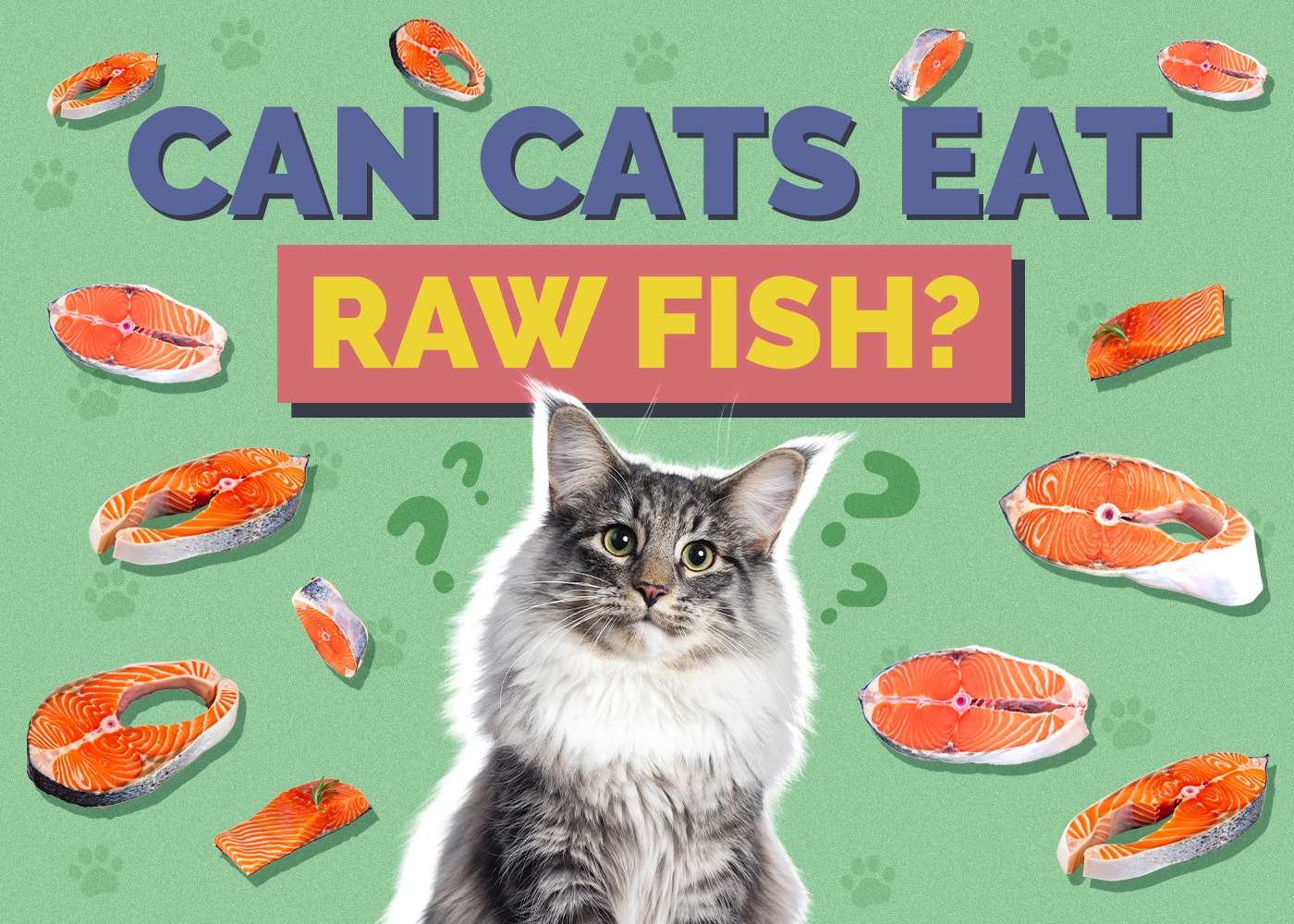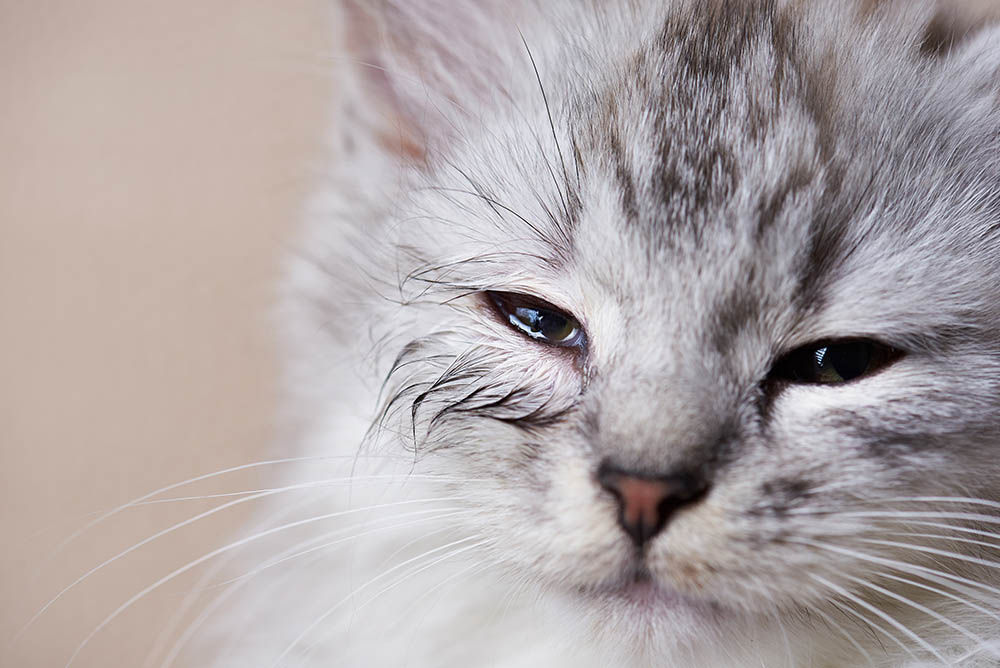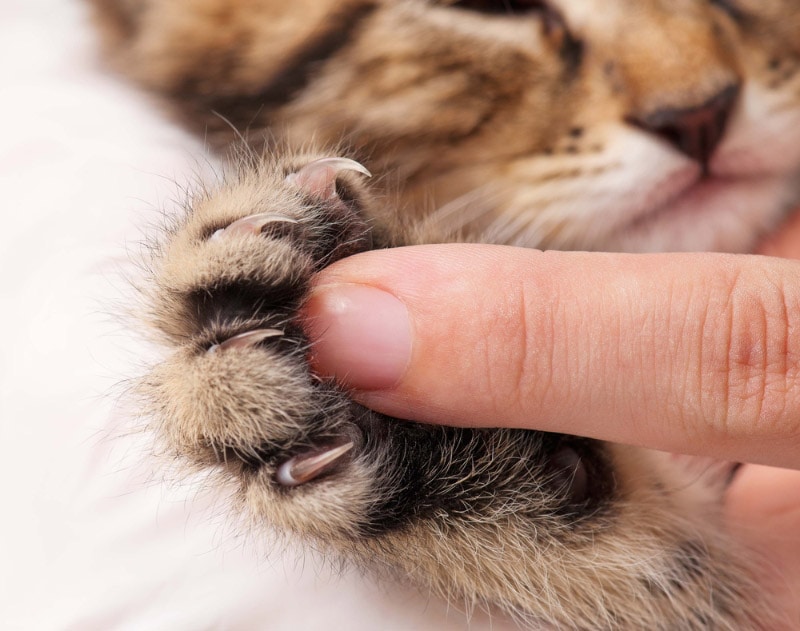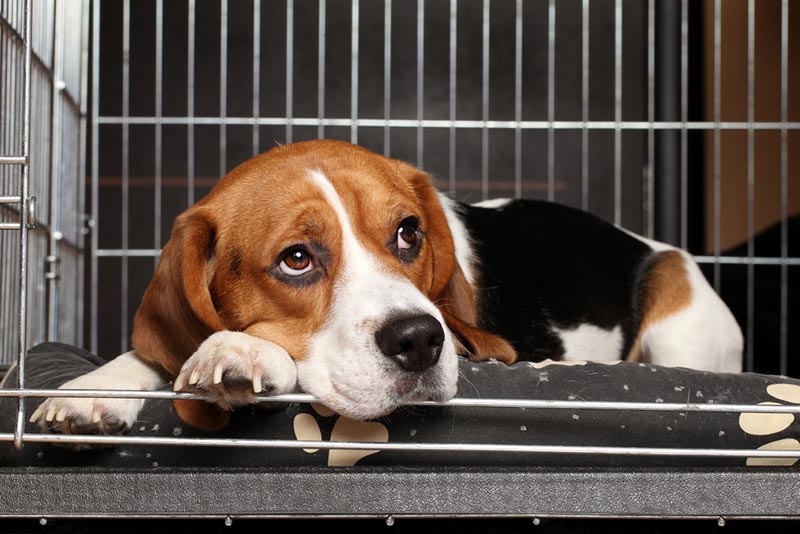15 Designer Cat Breeds For You To Adore (With Pictures)
Updated on
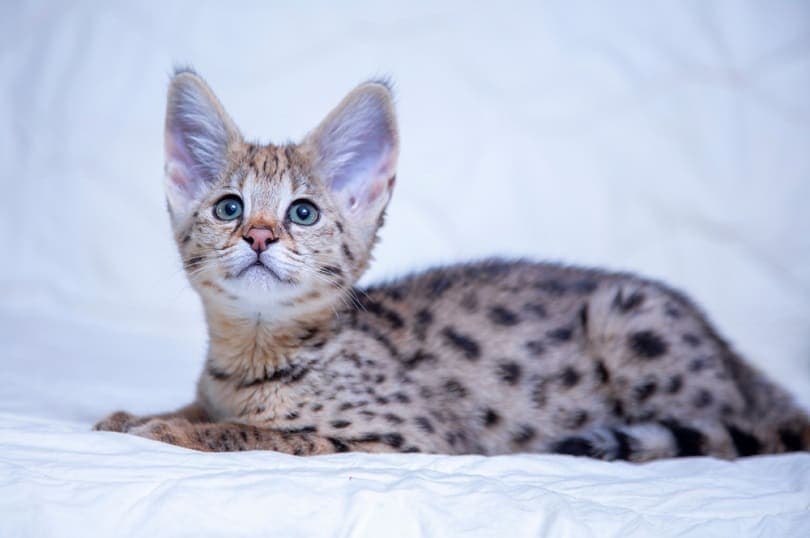
We all have heard the cute, but sometimes ridiculous sounding, names for mixed dog breeds, such as the Chiweenie, Shorkie, and Pomsky. But did you know that there are also mixed-breed cats?
Hybrid breeds, often called designer cats, can display various traits from their parents. These unique-looking felines are attractive to cat owners since they’re unlike any other pet they’ve seen.
Are you curious what a Munchkin mixed with a Persian would look like? How about a Selkirk Rex and a Munchkin? Whether you’re considering adopting a designer breed or want to look at cute cat pictures, we have you covered. Keep reading to learn more about 15 of the most popular designer breeds, their origins, and their personality traits.
The Top 15 Designer Cat Breeds
1. Ashera Cat
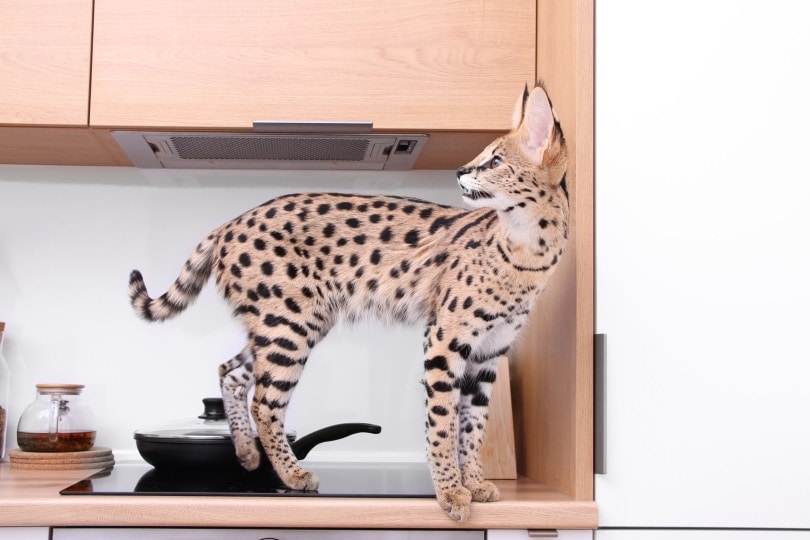
| Average lifespan: | 8–10 years |
| Average weight: | 22–30 pounds |
| Personality traits: | Calm, loyal, affectionate |
Ashera cats are a beautiful and exotic breed that’s a direct descendant of the Asian leopard, the serval, and the common household cat. They’re one of the newest designer cat breeds and were developed in Delaware in 2006 by Allerca Lifestyle Pets.
This breed seems to have more characteristics of dogs than cats. They’re very vocal, can learn to walk on leashes, and are calm despite their wild appearance. They can grow four feet tall, so their households need plenty of space to accommodate their large size.
Asheras are sterile, and you can only find one to adopt through the laboratory where they were designed. They come with a hefty price tag, starting at around $22,000, with reports of some buyers paying upwards of $125,000 for one kitten. A hypoallergenic version is available, but its price starts at $28,000.
There was a rumor several years ago that the existence of Ashera cats was a gimmick and that they were a variant of the much more affordable Savannah breed.
2. Bengal Cats
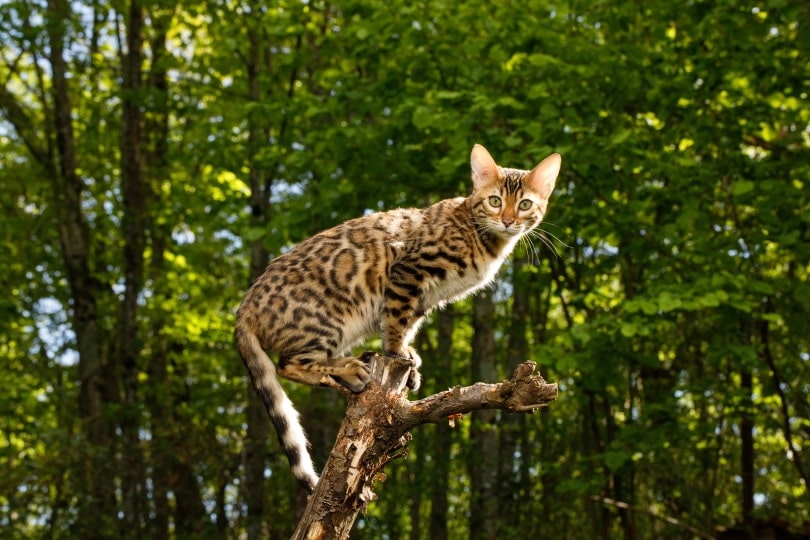
| Average lifespan: | 10–16 years |
| Average weight: | 8–17 pounds |
| Personality traits: | Curious, mischievous, energetic |
Bengals are one of the most popular designer breeds. They have a beautiful spotted coat and a strong body that resembles an Asian leopard cat. Bengals are very active and intelligent. They’re fun to have around but can be challenging to live with. They are known for getting themselves into all sorts of trouble, like jumping onto every surface in your home and scratching at furniture.
Bengals love playing in the water, so it’s not unusual for them to dip their paws into fish tanks or jump into the water with you. Despite being recognized as an official breed by TICA in 1986, some places in the world still won’t allow you to keep one as a pet. Some US states have laws that state the Bengal you adopt must be four generations removed from the Asian Leopard cat, while others have made it illegal to own any generation.
3. Ocicat
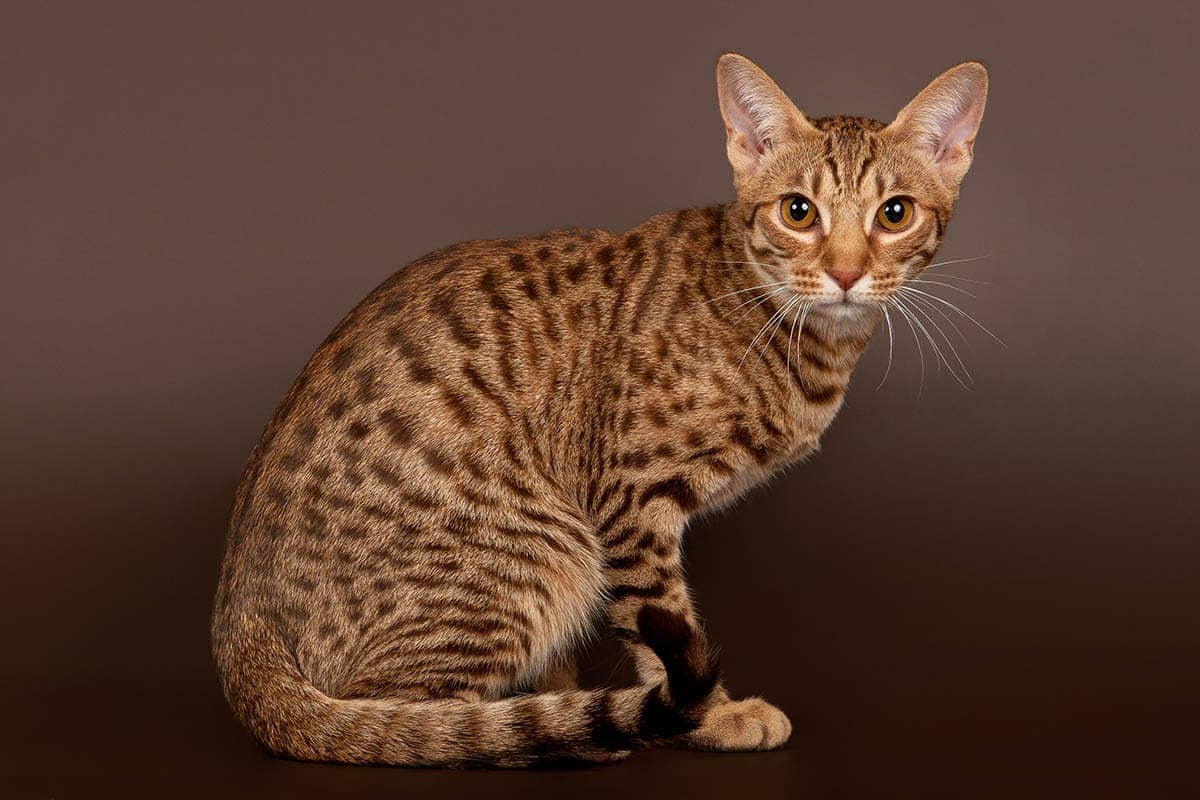
| Average lifespan: | 10–15 years |
| Average weight: | 6–15 pounds |
| Personality traits: | Devoted, energetic, vocal |
Like the Bengal, Ocicats resemble wild animals. The difference between the two breeds is that Ocicats have absolutely no wild cat DNA in their gene pool. They look wild but have the same temperament as a domestic cat.
Ocicats are a mix of Siamese, Abyssinian, and the American Shorthair. The traits of their parents can influence their personality, and it’s unclear which breed they’ll take after most. However, they’re great cats for homes with gentle children and other pets.
They’re very social, friendly, and trainable. Some even love water! They need a lot of attention from their owners and don’t like being left alone if they don’t have another animal companion to spend time with.
4. Chausie Cats
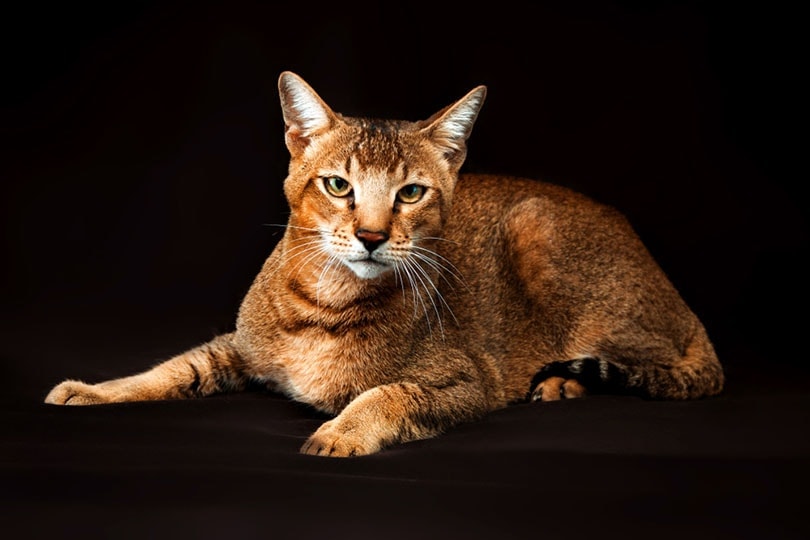
| Average lifespan: | 12–14 years |
| Average weight: | 15–30 pounds |
| Personality traits: | Intelligent, active, athletic |
The Chausie is another designer cat that looks like they stepped out of a jungle. They were developed by crossing a jungle cat (Felis chaus) with domestic cats. It was first recognized as a domestic breed in 1995.
Chausies are very active and need a lot of stimulation and company to stay happy. They can be very busy as kittens and retain most of their playfulness and athleticism throughout their life.
They’re loyal and affectionate to their families and tend to get along well with people of all ages. They’re easygoing and mix well with other cats and dogs—provided the introduction is done correctly.
5. Dwelf Cat

| Average lifespan: | 12–15 years |
| Average weight: | 4–9 pounds |
| Personality traits: | Social, interactive, loyal |
One look at the Dwelf, and you can see how unique they are from most other designer cat breeds. This interesting-looking hairless cat gets their name from their dwarf-like stature and elfin features. Though hairless, they often have downy hairs throughout their body that give them a lovely suede-like feeling.
Dwelf cats are incredibly affectionate and loyal to their humans. They love to be involved in everything you’re doing and don’t do well spending time alone.
Their short stature keeps Dwelfs closer to the ground. They aren’t as active as other designer breeds but don’t confuse their size with fragility.
6. Highlander Cats
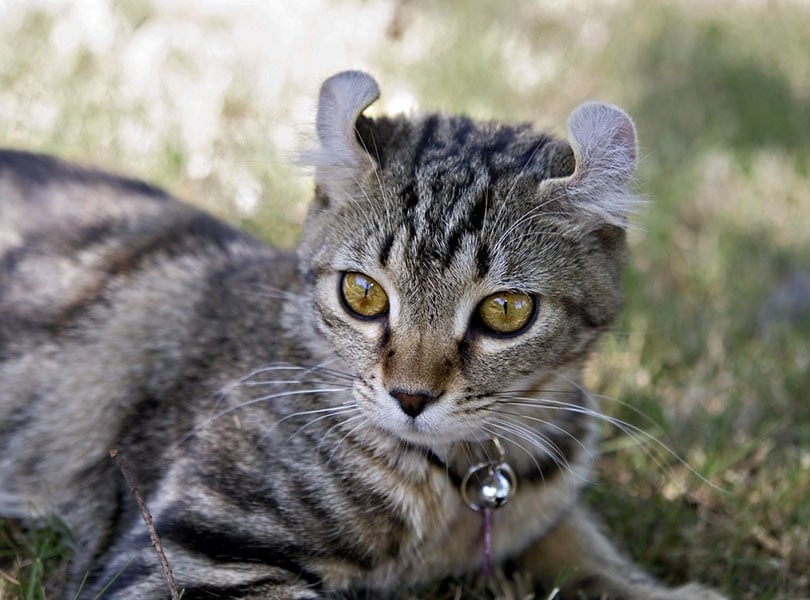
| Average lifespan: | 10 – 15 years |
| Average weight: | 10 – 20 pounds |
| Personality traits: | Gentle, social, confident |
The Highlander comes from the deliberate crossing of the Desert Lynx and Jungle Curl breeds. They resemble a wildcat, but since they were bred from two hybrid breeds, they don’t have wildcat genes. Highlander cats are easily recognizable thanks to their curled ears, polydactyl (extra) toes, and short tails.
They’re known for their playful energy, and their families need to provide plenty of opportunities to play and ensure they spend time playing with them every day.
Like some of the other designer breeds on our list, Highlander cats love water. They’re fascinated with running water and aren’t afraid to dip in a paw or two.
7. Cheetoh
| Average lifespan: | 10–15 years |
| Average weight: | 12–25 pounds |
| Personality traits: | Intelligent, athletic, curious |
The Cheetoh breed is large, exotic-looking, and active. Their wild appearance makes them look like the wildcats that founded their breed, but their temperament is that of domestic cats. This breed was born from the crossing of Bengals and Ocicats.
Cheetohs are happiest in the lap of their family members and are very gentle and playful with their owners. They don’t like to be left alone and enjoy the company of other pets.
They are very clever and curious, too. They like to be challenged with puzzle toys and show off their intelligence through learned tricks.
8. Siberian Cats
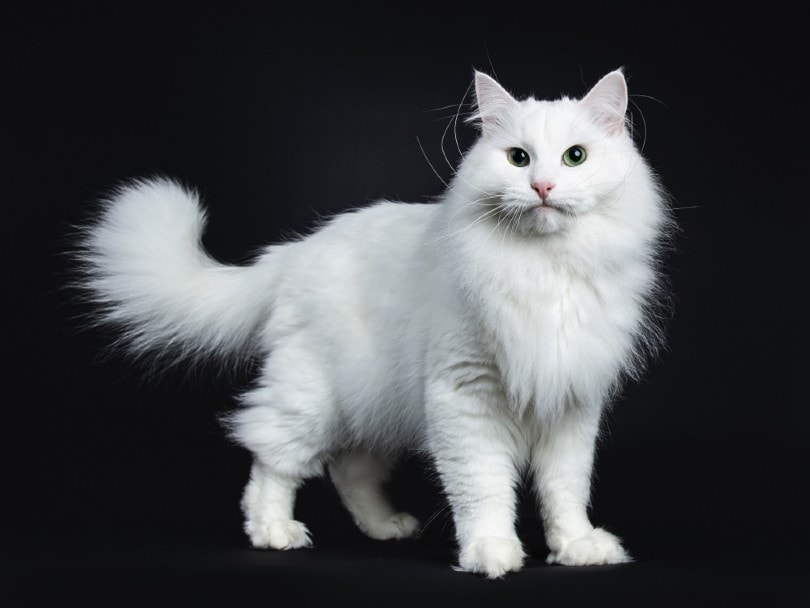
| Average lifespan: | 11–18 years |
| Average weight: | 8–17 pounds |
| Personality traits: | Agile, affectionate, playful |
Siberian cats are sometimes also known as Siberian Forest cats. This is an ancient designer breed from Siberia and is Russia’s national cat. Siberians often have a slight arch in their backs, thanks to the discrepancy in the length of their front and hind legs.
Their unique shape is part of what makes them so agile. Despite their very large size, they are incredible jumpers and aren’t afraid to make the highest spots in your home their territory.
This sweet-natured breed loves to snuggle and is very devoted to their families. They are so easygoing that they do well in homes with children and other pets.
9. Foldex Cats
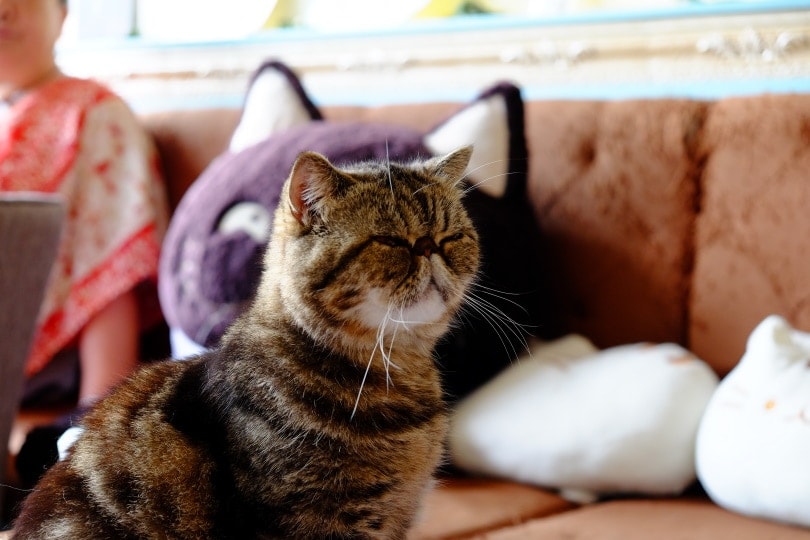
| Average lifespan: | 12 – 15 years |
| Average weight: | 5 – 14 pounds |
| Personality traits: | Cheerful, charming, intelligent |
The Foldex, sometimes known as the Exotic fold, is a rare breed that originated in Canada. The Foldex came from crossing Exotic Shorthairs with Scottish Folds. Foldexes have championship breed status but are only recognized by the Canadian Cat Association.
They are very affectionate but aren’t too demanding. They adore cuddles and are loyal to their owners, but they’re not afraid of strangers and will approach them without a second thought.
They’re curious and intelligent but won’t get as much trouble as other designer breeds.
10. Lambkin Cat
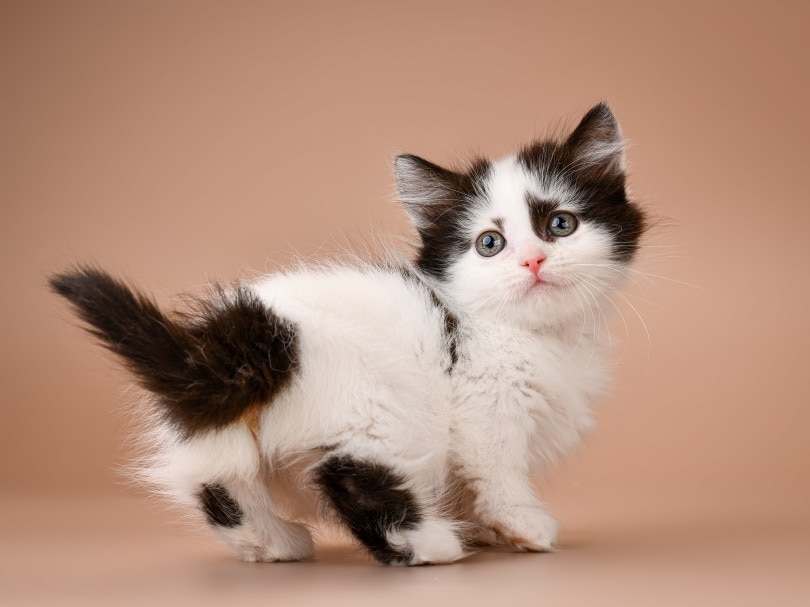
| Average lifespan: | 12–14 years |
| Average weight: | 5–9 pounds |
| Personality traits: | Sweet, easygoing, docile |
Lambkins are adorable Munchkin dwarf cats with distinctive curly coats. They were produced by crossing Selkirk Rex with Munchkin breeds. There is controversy surrounding this breed since their lineage contains Munchkin genes. The Lambkins and Munchkins’ small stature is due to a genetic mutation that essentially causes limb deformity.
Lambkins are incredibly easygoing and gentle cats. They’re a perfect pick for families with children and other animals. They are very tolerant and warm, so they don’t have difficulty fitting in.
They are a very social breed, so they need a lot of attention and care every day. They love playing games with their owners and do best in households that have time to play with them often.
11. Minuet Cats
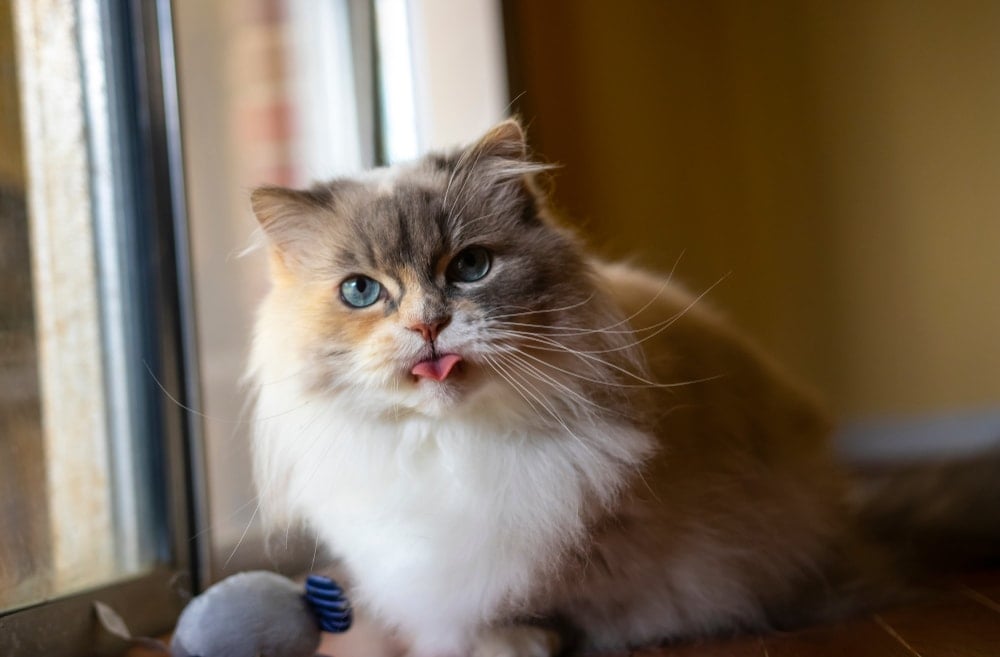
| Average lifespan: | 9–15 years |
| Average weight: | 5–9 pounds |
| Personality traits: | Charming, sweet, social |
Minuets, sometimes called Napoleons, are a cross between Persians and Munchkin cats. They have the exotic beauty of their Persian lineage paired with the short stature of the Munchkin. Don’t let their short legs fool you; the Minuet is still an incredibly agile breed.
The cat is very people-oriented and gentle, thanks to their Persian genes. They inherited their curiosity from their Munchkin heritage. The Minuets’ sweet and affectionate nature makes them ideal pets for families with children and other pets. They need a lot of attention to stay happy, and the ideal family should carve out time to snuggle and play with them daily.
12. Siamese Manx
| Average lifespan: | 10–15 years |
| Average weight: | 8–16 pounds |
| Personality traits: | Loyal, snuggly, tolerant |
The Siamese Manx, sometimes known as Owyhee Bob or Mountain Bob, is a cross between the Siamese and Manx breeds. They are both a designer and experimental cat breed whose existence is only recognized by one registry—the Rare and Exotic Feline Registry.
They retain some of the best personality traits from their Siamese and Manx genetics. They are playful and sociable, love to participate in family activities, and have a dog-like loyalty to their owners. While they can get along with other animals, females can sometimes be territorial.
13. Skookum
| Average lifespan: | 10–15 years |
| Average weight: | 3–7 pounds |
| Personality traits: | Smart, easygoing, playful |
Skookum cats are another experimental designer breed. They are developed by crossing Munchkins with LaPerm cats and have curly hair on a small, short body. Just because they’re small doesn’t mean that Skookum aren’t talented climbers or jumpers. They love high places and thrive best in homes with cat trees so they can survey their environment from higher vantage points.
Skookums are happy-go-lucky and confident, and although they’re playful, they enjoy napping on their owner’s lap, too. It’s not unusual for Skookums to keep their kitten energy well into adulthood. Their easygoing nature makes them perfecgt for families with children.
14. Savannah Cat
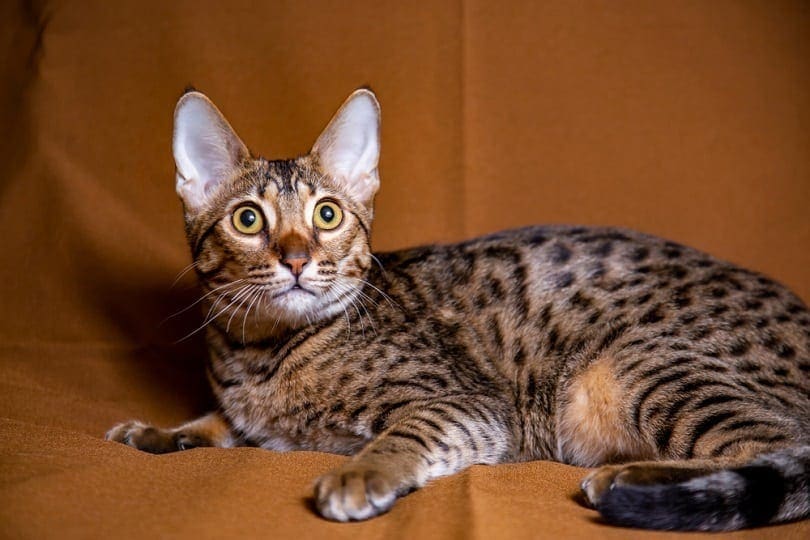
| Average lifespan: | 12–20 years |
| Average weight: | 12–25 pounds |
| Personality traits: | Loyal, athletic, bold |
Savannahs are produced by crossing a domestic cat with a Serval (a wild African cat). They have a very dog-like personality; they love to play in the water and can be trained to do leashed walks.
Their strong hunting instincts set them apart from others with wildcat ancestry, and a Savannah may not be a good match for households with small pets like fish or hamsters. Despite their need to hunt, they have a mild temperament and can get along well with other animals closer to their size.
Savannahs love to jump and can wreak havoc in homes that don’t provide plenty of climbing space. They do best in environments with hiding spots and room to run. They can jump 7 feet high, so no space in your home is safe from their antics.
15. Toyger
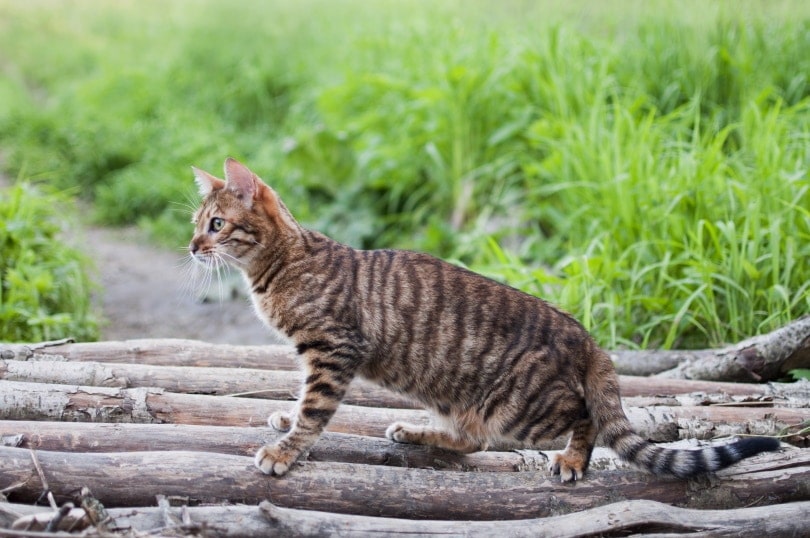
| Average lifespan: | 9–13 years |
| Average weight: | 7–15 pounds |
| Personality traits: | Calm, friendly, outgoing |
Toygers are a newer designer breed with a deliberate tiger-like appearance. They were produced by crossing a domestic short-haired cat and a Bengal. Toygers are playful and friendly. They get along with other pets and love spending time with their families.
They can learn tricks like their Bengal cousins, and some have performed in agility competitions. Their high intelligence level requires daily stimulation. Their owners will need to provide plenty of opportunities for play and for challenging their cleverness.
Conclusion
This list of 15 designer cat breeds is not exhaustive but gives you an idea of what types of hybrid cats are out there. If you’re considering adopting a designer cat, do plenty of research beforehand. Many of these cats have wildcat ancestry and may not align well with your home, family, or goals as a pet owner.
- See Also: Scottish Fold Munchkin Mix Cat Breed


